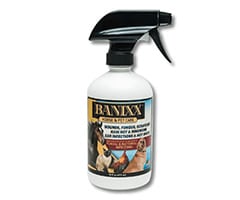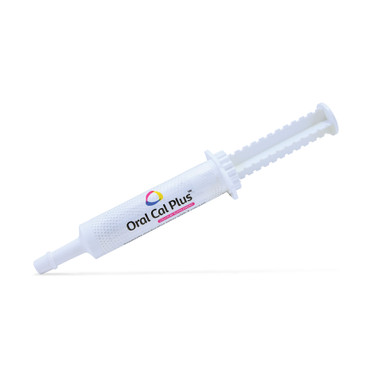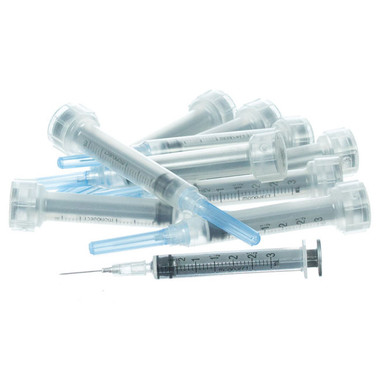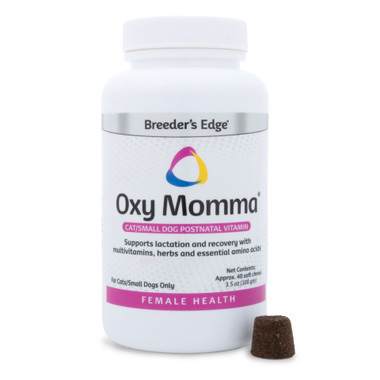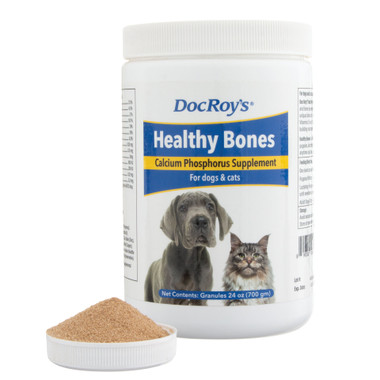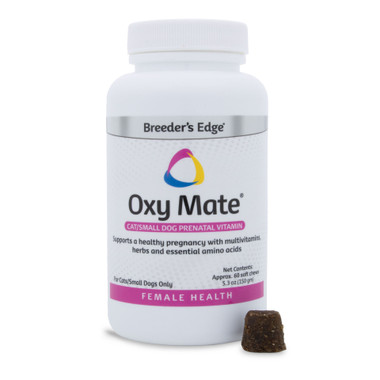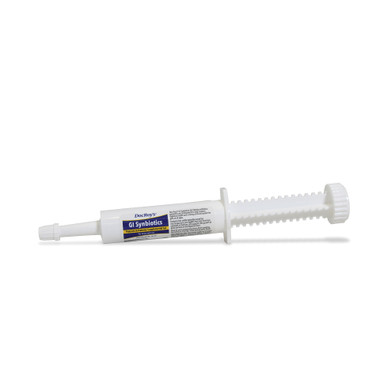It’s Summer….It’s HOT…learn how to Beat the Heat for your Horse!
Estimated 0 min read
The approach of summer means banishing your winter clothes to the closet, and many times, attending more horse shows and trail rides. But with the return of longer days comes hotter temperatures, and the results can be more than just uncomfortable. Working hard when it is too hot outside can cause serious health problems for both you and your horse. That’s why it’s important to take precautions on sweltering days to ensure that neither of you overheat.
Watch for Horse Health Risks

If you’re too hot to jog in the heat, SO IS YOUR HORSE
Our experts from hot regions said in their experiences, horses can handle extreme cold better than they can handle extreme heat. But with a few guidelines, you can ensure your horse’s safety while still working with them in the summer.
“My rule of thumb is, if I wouldn’t go out and jog around the block at that time, it’s too hot to work my horse,”Matt Mills, a reining trainer from Scottsdale, Arizona, says.
Mills observes his horses throughout the day and during training sessions to see if they are sweating profusely and breathing hard. But he really pays attention if he’s worked a horse for around 10 minutes and the horse isn’t sweating. Horses suffering from anhidrosis—the inability to sweat—are at an especially great risk in the heat. Our experts recommend watching these horses closely and being ready to take action to cool the horse down.
“Sweat is the natural way that the horse cools itself down,” Mills says. “So, if you’re riding on a hot day and they are not sweating, that’s when they’re in big trouble. You’ve got to stop what you’re doing, go immediately to the wash rack. Spray the whole horse down and stand them in front of a fan until they cool down. And if your horse has stopped sweating altogether, you need to involve your veterinarian to treat it.”
How to Tell if Your Horse is in Trouble due to the Heat
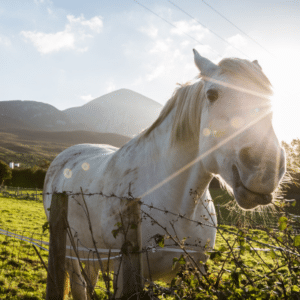
A dehydrated horse will pant.
Veterinarian Dr. Michael Sorumof Scottsdale, Arizona, says a dehydrated horse will often pant, with an elevated temperature and heart rate—even at rest. You can check the horse’s temperature with any digital thermometer available from the drug store. Dr. Sorum says to lubricate the tip and insert rectally. A normal temperature is between 99 and 101 degrees Fahrenheit. Dr. Sorum says anything above that range could mean the horse is too hot.
Your horse’s pulse, which reflects your horse’s heart rate, can be checked by feeling on the neck. A normal rate is between 25 and 40 beats per minute. A dehydrated horse will have an increased heart rate closer to 50-60 beats per minute. Three other places to check for pulse are (1)The artery that crosses the lower border of the jawbone, (2) The digital artery below the fetlock at the inside of the ankle or (3)The radial artery at the back inside of the knee.
You can also determine if a horse is dehydrated by checking the capillary refill. Here’s how:
“Press the gums with your finger,” Dr. Sorum says. “A healthy horse’s gums will blanch white under that pressure and return to pink within a second. If the gum is blanched at that touch and it stays that way for three or four seconds, you’re probably looking at dehydration and some stress.”
Horses can also suffer heatstroke, which can show signs of weakness, lethargy, and sometimes even behavioral changes. If your horse is acting strangely in the heat, take steps to cool your horse off immediately.
Risk of Founder Increases with Heat, Humidity and Grass Composition
Millshas seen horses founder in part, after standing outside on hot ground for too long. AndDr. Sorumsays he often encounters instances of founder in the late summer due to a combination of increased humidity from rain, heat and a change in the composition of grass.
“Higher humidity and hotter weather results in higher starch levels in the pasture, and it contributes to laminitis,” Dr. Sorum says. “Especially in horses with metabolic issues and older horses that tend to be a little overweight. I had no laminitis issues all year last year, and in the first week of August, it was hot and humid and I had seven laminitis cases.”
Focus on Horse Hydration and Electrolytes
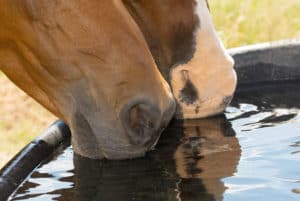
Horses drinking water provided throughout the day.
All of our sources emphasize how crucial offering water to their horses is to help combat the effects of the heat.Millssays water is the most important part of his care regimen in the summer.
“The number one thing we focus on [for summer care] is hydration,” Mills says. “We give electrolytes and just try to keep those horses drinking as much water as possible.”
Mills feeds his horses SmartLytes powdered electrolytes daily in their feed, and tube electrolytes as needed for horses that have been sweating a lot.
He also offers water in a bucket beside the arena at every ride, which teaches his horses to drink throughout as part of the training routine.
“If you do it year-round, you make a habit of it for the horse, and horses are creatures of habit,” Mills says. “When you finish your ride, you walk over and offer them a drink in the arena. Pretty soon, in the summer, when they really need the water, they will go and get a drink. It’s a pain to do initially, but once you get in the habit, I’ve really noticed the difference in my horses.”
Hose Down Hot Horses
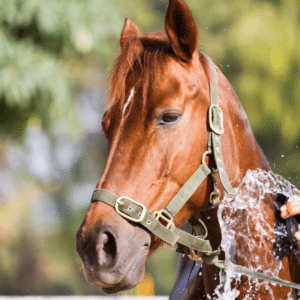
Horse getting cooled down with water hose.
Our sources say the fastest and easiest way to cool your horse is by spraying it down with a water hose. An abundance of blood vessels around the legs means focusing cool water in those areas will yield the best results. For a horse that’s really overheated,Dr. Sorumrecommends adding ice to a bucket and pouring that over the base of the horses’ skull and legs.
In addition to spraying the horse with a hose,Millshas seen success for severely overheated horses by sponging the horse down with a mix of rubbing alcohol, ice and water.
“Usually if I’m that concerned about how hot my horses are you can’t do too much,” Mills says. “I just focus on getting them cooled down fast.”
Jamie Robinson is an avid trail rider from the Ocala region of Florida. She routinely hoses her horses down at the end of the day, especially their legs.
“My horses just line up in the paddock to get to the hose and I will hose them off,” Robinson says. “And scraping them—you can’t leave them soaking wet because it just makes steam.”
Employ Fans (Box and Ceiling) and Misters
Our experts employ box fans in their horses’ stalls, aisle fans and measures such as swamp coolers and Port-A-Coolers, in which a fan draws air over water to cool by evaporation.
APHA all-around trainer Randall Roserof Lutz, Florida, will hose down his brick paver barn aisle and place a fan at the end of the aisle to add evaporative cooling to the environment.
Being in arid Arizona,Millsalso places misters in his barn and arena to offer evaporative cooling in crucial areas.
“If a horse gets overheated in the arena, we will go stand the horse in front of the fan and mister by the arena until they cool down,” Mills says.
For locations where temperatures can stay warm even after the sun goes down, Mills runs fans and misters, as well as swamp coolers to make sure his horses have the chance to cool down overnight.
“I’ve had a veterinarian tell me that even though you’ve cooled the horse down after riding and they’re not breathing hard, overnight its body may not cool down enough,” Mills says. “So they’re running hot all the time, and when you ride, they overheat faster.”
Robinson often hoses her horses off and stands them in front of the aisle fan on particularly warm days. Her property has several small lakes, so she makes swimming a routine in the summer.
“We take the horses swimming quite a bit,” Robinson says. “That’s one of our summer treats.”
Avoid Riding at Peak Heat Times
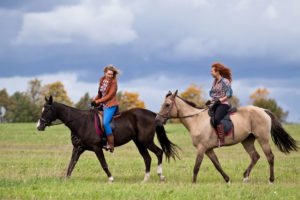
Horse riding in cooler weather.
Probably the most important thing you can do to protect yourself and your horse from the heat is choosing a cooler riding time. All of our experts advise against riding during the hot parts of the day in the summer. Even if you have a covered arena, they recommend riding early in the morning, or late at night.
Robinson stalls her horses from 9 a.m. to 6 p.m. during the summer months to keep them away from the heat and sun. She watches the heat index, in addition to the actual temperature forecast. She says many riders in her area ride at night.
“Full moon trail rides are pretty popular,” Robinson says. “We’ll also ride in lighted arenas at night.”
Decrease Riding Intensity in the Summer
Some riders avoid strenuous riding work in the summer altogether.Millsbases his whole training program around avoiding the dangerous middle of the day temperatures, and he tries to train his horses hard earlier in the year so he can ease off in the summer.
Robinson has to battle Floridian bugs as well as the heat and humidity in the summer. She says many times riders in her area hold off on riding during the hottest months and resume when the daily temperatures are lower. Florida has mild temperatures year-round, which makes for safer riding conditions at other times of the year.
“A lot of horses—older ones especially—really struggle in the summer,” Robinson says. “We just can’t ride sometimes. So we’ll put the horses up during the day for those three or four months and we wait for winter to be able to go out and really trail ride again.”
If Riding in the Heat, Make Sure your Horse is Physically Fit
If you will be going to a show in a hotter region in the summer,Dr. Sorumrecommends getting your horse as fit as possible before you make the journey.
“The horses I’ve noticed that have a problem with the heat were usually not as fit,” Dr. Sorum says. “The fitter your horse, the more likely they will be able to get acclimated.”
Travel Smart

Horse traveling in trailer.
Millsoffers electrolytes the day before a summer road trip. He plans to drive during the cooler parts of the day or week. And he brings containers of his own water. This helps his horses continue to drink on the journey.
“Horses are so funny,” Mills says. “They could be dying of thirst, but if you offer them water from the gas station that smells funny, they won’t touch it.”
IfRoseris traveling to a show in a region with a different kind of heat such as Tulsa, Oklahoma, or Fort Worth, Texas, he’ll wean his horses off the fans in the barn at home to help get them acclimated. Once at the show, he brings box fans and keeps several water buckets in each horse’s stall. He also gives the horses electrolytes to encourage drinking.
“Know your horse’s drinking habits and how much water they usually consume,” Roser says. “I would add electrolytes to your horse’s diet at least a week out from the show. And know how to check your horse for dehydration.”
Meet the experts:
Dr. Michael Sorumhas more than 30 years’ experience in equine sports medicine and is board certified in equine practice by the ABVP. He serves the Phoenix area of Arizona, offering diagnostics and sports medicine, as well as dental and other routine services.
Matt Millsis a Scottsdale, Arizona-based reining trainer. He’s trained Reiners since 1996. In 2006, he won the United States Equestrian Federation Open Reining Championship and he was a member of the the Gold-Medal winning U.S. team at the 2006 World Equestrian Games in Aachen, Germany. He’s won more than $500,000 in National Reining Horse Association competition. On his subscription training video site,mattmillsreining.com, Mills offers more than 60 tutorials on everything from training to horse care.
Randall Roseris an APHA all-around trainer from Lutz, Florida. An APHA National Director, Roser has trained horses for 25 years and has coached multiple world and reserve world champions.
Jamie Robinsonis a PAC Recreational Riding participant from the Ocala region of Florida.
Posted by Abigail Boatwright
Of course, one of the easiest ways to keep your hooved pal feeling their best is to stay up to date with the latest in equine careby reading informative blogsin the horse blog section of the Banixx website!
We hope you found this article helpful and if your horse ever gets anywounds,cuts.scratchesorwhite line disease, we hope you keep Banixx Horse & Pet Care in mind. We have information on topics such as your horse’swolf teeth? Or, ways tohandle manure removalor the miracles ofacupuncture for your horse..yes. we’ve got these all covered for you! Need your own Banixx, clickhereto find out where to buy it!



